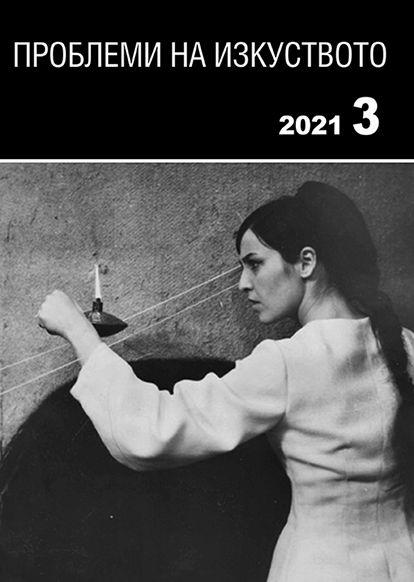Поетичната вълна в драматургията и нейният сценичен образ в представленията на 60-те години на ХХ век
The Poetic Wave in Bulgarian Playwrighting and its Scenic Image in the 1960s Productions
Author(s): Albena TagarevaSubject(s): Theatre, Dance, Performing Arts, Fine Arts / Performing Arts
Published by: Институт за изследване на изкуствата, Българска академия на науките
Keywords: scenography; April 1956 Party line; Socialist Realism; Bulgarian playwrihting; poetic drama
Summary/Abstract: This article traces some of the scenographic strategies adopted by Bulgarian theatre with the coming and establishing of the new principles of dramaturgy, the so-called poetic drama at the turn of the 1960s. Owing to the changes in the political and social atmosphere following the Plenary Meeting of theBulgarian Communist Party in April 1956, stronger European influences became possible in Bulgarian arts, and directors, playwrights and scenographers made their first attempts to challenge the status quo of the dogmatic Socialist Realism. The initial efforts to make this change happen were witnessed in the visual aspect of the theatrical performance as early as Stalin’s death in 1953. The servile critics, however, who insisted on solutions true to the respective historical period, resisted the new approaches to the classics of playwriting. Poetic drama proved to be an avenue for legitimising the conventional scenic environment. Emblematic of that period plays such as Every Autumn Evening by Ivan Peichev, When Roses Dance by Valeri Petrov and It’s a Small World by Ivan Radoev, where the individual rather than the co-workers is central to the action, and their productions are analysed. The variety of dramaturgical strategies applied by the authors compelled directors and scenographers to take new production approaches and innovative visual solutions, by means of which the image of Socialist Realism was changed onstage. The dramatic unities were not observed. Directors and scenographers opted for the visual representation of retrospections, monologic narratives, brought forth by the character’s troubled inner world, which necessitated a new or rather already forgotten stage expression. The best part of the innovations were well known principles, with which the theatre reformers of the early twentieth century experimented, successfully used by the 1920s and 1930s theatre avant-garde first and foremost in productions of classics. The ‘innovative’ in this case is treated in the context of the official aesthetic of the dogmatic Socialist Realism that dominated until then and ought to be rethought so that the form to fit in the borders eventhough already blurred of the method, steering clear of formalism.
Journal: Проблеми на изкуството
- Issue Year: 2021
- Issue No: 3
- Page Range: 48-54
- Page Count: 7
- Language: Bulgarian
- Content File-PDF

